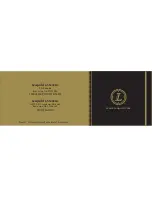
12
Levenhuk Skyline PLUS Telescopes
EN
All parts of the telescope will arrive in one box. Be careful when unpacking it. We recommend
keeping the original shipping containers. In the event that the telescope needs to be shipped to
another location, having the proper shipping containers will help ensure that your telescope survives
the journey intact. Be sure to check the box carefully, as some parts are small. All screws should be
tightened securely to eliminate flexing and wobbling, but be careful not to overtighten them, as that
may strip the threads. During assembly (and anytime, for that matter), do not touch the surfaces
of the optical elements with your fingers. The optical surfaces have delicate coatings on them that
can easily be damaged if touched. Never remove lenses or mirrors from their housing, or the product
warranty will be null and void.
Telescope optical system and construction
Levenhuk Skyline PLUS is a series of modern telescopes for entry-level and amateur astronomers.
Reflectors are good for studying solar system and bright deep-sky objects, while refractors are suitable
for planetary observations as well as for studying terrestrial objects.
This user manual is applicable to several refractor (fig. 1a) and reflector telescopes (fig. 1b) on
equatorial mounts. Read the user manual carefully to find the information about the assembling and
adjustment of your telescope model, and carefully follow the instructions.
Telescope assembly
• Slowly loosen the tripod locking knobs and gently pull out the lower section of each tripod leg.
Tighten the clamps to hold the legs in place. Spread the tripod legs apart to stand the tripod upright.
• Adjust the height of each tripod leg until the tripod head is properly leveled. Note that the tripod
legs may not be the same length when the equatorial mount is leveled.
• Place the accessory tray on top of the bracket, and secure it with thumbscrews from underneath.
Attach the equatorial mount to the tripod head.
• Turn the azimuth adjustment knob up and tighten the knurled knob underneath the tripod head to
secure mount to tripod (fig. 2).
• Orient the mount vertically.
• Loosen the Dec. lock knob. Rotate the mount 180°.
• Loosen the R.A. lock knob located on the opposite side. Rotate the mount 180°.
• Loosen the latitude lock knob. Set the angle according to your location latitude. Rotate the
mount 180°.
• Retighten the Dec. and R.A. lock knobs (fig. 3).
• Slide the counterweights halfway along the counterweight bar.
• Holding the counterweights with one hand, screw the counterweight bar into the threaded hole on
the mount. Tighten the locknut on the counterweight bar until it is locked.
• Attach the slow-motion control to the worm gear mechanism. Tighten the locking screws to secure
the control in place (fig. 4).
Telescope tube with ring clamps
• Remove the ring clamps from the telescope by releasing their thumbscrews and opening their hinges.
• Using the bolts provided, fasten the ring clamps to the mount with a wrench.
• Place the telescope tube between the rings and balance it.
• Close the hinges around the telescope and retighten the thumbscrews. Do not overtighten (fig. 5).
Telescope tube without ring clamps
• Place the telescope tube at the saddle and balance it. Fix the telescope tube with the lock knobs
provided.
CAUTION! Never look directly at the Sun — even for an instant — through your telescope or finderscope without
a professionally made solar filter that completely covers the front of the instrument, or permanent eye damage
may result. To avoid damage to the internal parts of your telescope, make sure the front end of the finderscope
is covered with aluminum foil or another non-transparent material. Children should use the telescope under adult
supervision only.
Summary of Contents for Skyline PLUS
Page 2: ......



































